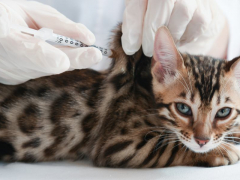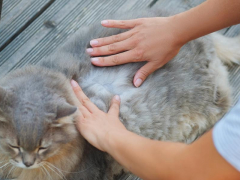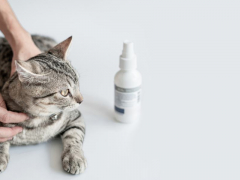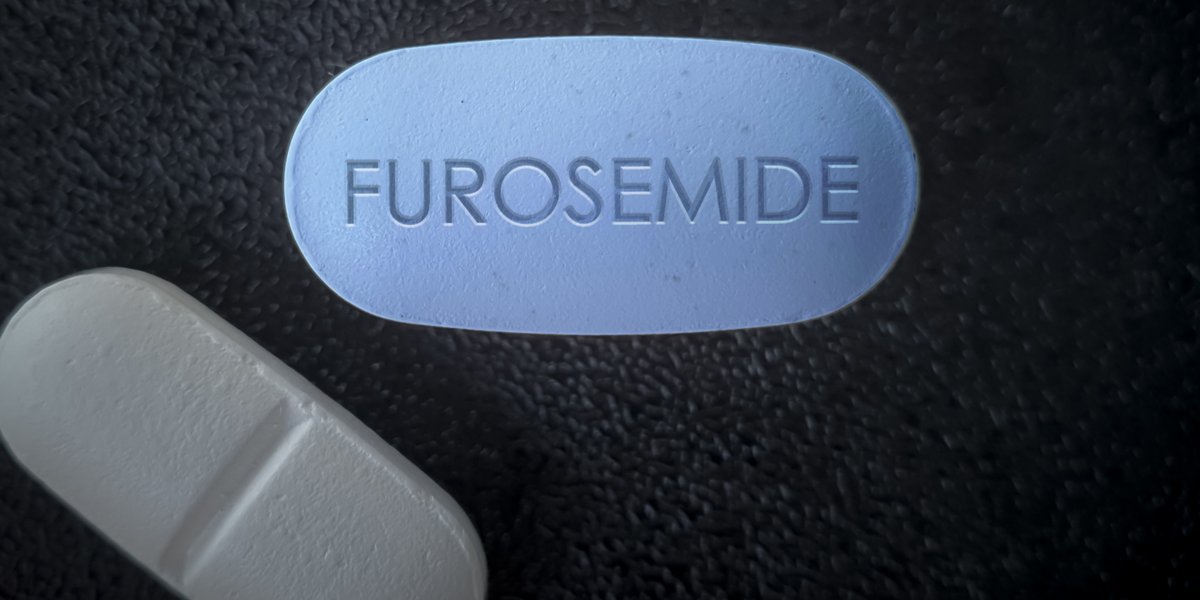
Furosemide, for which common brands include Lasix, Salix, and Disal, is a medication commonly used in veterinary medicine to treat signs of congestive heart failure in cats. In this article, you’ll learn what furosemide is, how it works, indications for its use, common side effects, and some frequently asked questions.
Furosemide for Cats Overview

About Furosemide for Cats

Furosemide, also commonly referred to by one of its brand names, Lasix, is a medication called a loop diuretic.
A diuretic is essentially a medication that is used to increase fluid output by upregulating urine excretion through the kidneys.
While there are a couple of different types of diuretics, loop diuretics act on a structure in the kidneys called the loop of Henle, hence the name. The loop of Henle is the structure in the kidney largely responsible for reabsorption and retention of water and electrolytes like sodium, chloride, and potassium.
Keeping things simple, furosemide blocks the reabsorption of water and certain electrolytes, leading to increased urine production.
In medical conditions where abnormal fluid build-up has occurred, such as with pulmonary edema (fluid in the lungs) from congestive heart failure, the use of furosemide helps to pull water out of these spaces and get the kidneys to pee it out.
Also Read: Heart Attacks In Cats: Causes, Symptoms & Treatment
What Does Furosemide Do for Cats?

The most common condition where furosemide is used in cats is with congestive heart failure. This is where the proper pumping of blood is compromised by poor heart function. The backing up of blood from poor flow, coupled often by higher pressures and stress on the heart, leads to fluid build-up in the lungs, which is called pulmonary edema.
In cats, a common variant is for fluid to develop around the lungs, which is called pleural effusion.
Whether fluid builds up within the lungs (pulmonary edema), or around them (pleural effusion), this inevitably leads to difficulty breathing as the lungs are unable to fill properly with air. Left untreated, congestive heart failure can lead to death.
When furosemide is given, it helps to pull water out of these abnormal spaces, providing welcome relief for a cat struggling to take in air. This is the mainstay of initial treatment for pulmonary edema. For pleural effusion, manual removal of fluid from the chest is a very common component of treatment as well.
There are a couple of different heart conditions in cats that can lead to congestive heart failure, which is not covered in detail here. Hypertrophic cardiomyopathy (HCM) however, is the most common.
Furosemide may also sometimes be used in severe cases of acute kidney failure especially where urine production has essentially stopped, which is called oliguric renal failure. This is typically only done in a hospitalized setting as a way of jump-starting the kidneys to produce urine and dump out electrolytes so that intravenous fluid therapy can correct electrolyte and acid/base imbalances in the body.
Side Effects of Furosemide for Cats
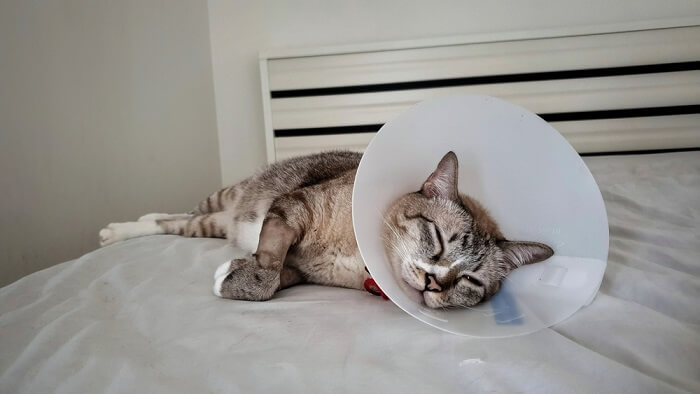
Cats with a poor appetite and signs of dehydration may be more likely to experience the effects.
While life-saving and necessary, especially for congestive heart failure conditions, furosemide can have concerning side effects to be aware of.
Electrolyte and acid-base imbalances can occur. When furosemide is initially started, it is common to check levels of electrolytes like sodium, chloride, and potassium, more frequently.
Furosemide also does increase stress on the kidneys to some extent as it increases urine filtration and production. Pets with normal kidney function may do just fine on initial and maintenance doses of Lasix, but kitties with pre-existing kidney disease may see worsening of kidney disease.
Labwork is more frequently rechecked for this reason as well, especially looking at the waste products blood urea nitrogen (BUN) and creatinine as markers of changes in kidney function.
Cats with normal appetite and water intake are less likely to see these types of adverse effects. Cats with a poor appetite and signs of dehydration may be more likely to experience these effects.
Other effects which are less commonly reported include non kidney function-related digestive disturbances like nausea, vomiting, and diarrhea.
While furosemide is a common human medication, it can cause harm in cats if used inappropriately. It should only be used when medically appropriate and it should never be used without consultation with a veterinarian.
Overdoses of furosemide can lead to acute kidney failure, electrolyte abnormalities, resulting neurologic changes like lethargy, coma, and seizures, and cardiovascular collapse. Make sure to keep any supply of furosemide in the home inaccessible to pets.
If you are ever concerned that your kitty may have developed side effects while using furosemide, or if your cat has accidentally ingested a supply of furosemide tablets prescribed for a human family member, make sure to contact your veterinarian, the ASPCA Animal Poison Control Center (1-888-426-4435), or Pet Poison Helpline (1-855-764-7661) for further advice.
Furosemide for Cats Dosage
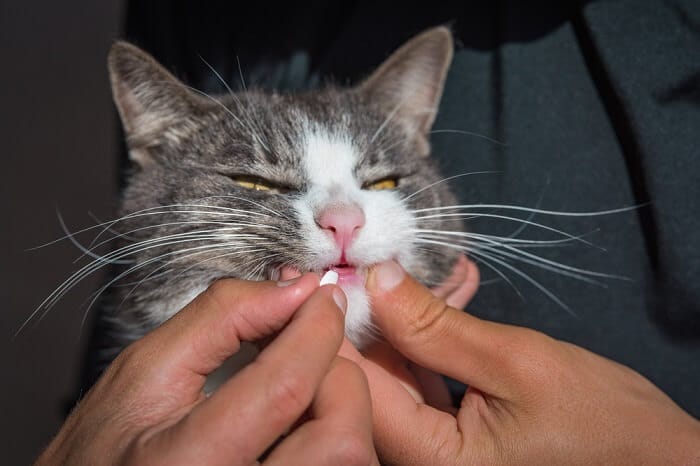
It’s very important not to change or alter your cat’s furosemide dosage without consulting with your veterinarian or veterinary cardiologist.
Because the dose of furosemide varies depending on the severity of the condition it is being used to treat, as well as the presence of any complicating factors like concurrent kidney disease, a specific dosage cannot be provided.
Initial doses are typically started low and increased incrementally based on the success of management. This includes any persistent fluid in/around the lungs, and any changes in kidney function.
Dosage frequency may vary a lot as well. Initially, it may only be given once a day or twice a day, but use three times a day is not uncommon in more severe or refractory cases of heart failure.
It’s very important not to change or alter your cat’s furosemide dosage without consulting with your veterinarian or veterinary cardiologist. In many cases of congestive heart failure, instructions to temporarily increase the dosage or add an extra dose are provided if this is appropriate when seeing any concerning changes in a cat’s heart failure condition, like increased breathing rate or difficulty.
If you feel your cat is experiencing respiratory distress as a complication of congestive heart failure, it is very important to consult with a veterinarian immediately, as emergency care may be needed.
Also Read: Heavy Breathing Cat – The 3 Types Of Heavy Breathing And What They Mean
The oral tablet form of furosemide may take up to an hour to begin being effective. In acute heart failure situations, an injectable form of furosemide that has a quicker onset is typically given, along with close monitoring at the clinic or hospital.
Conclusion
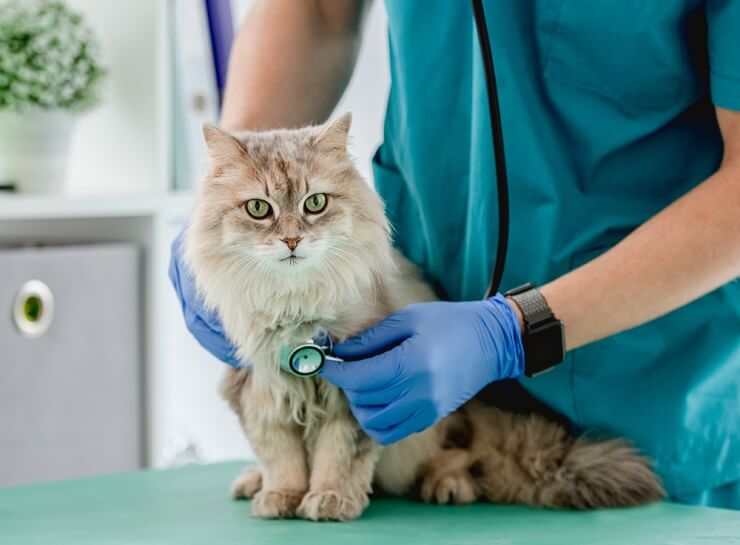
If your cat is experiencing an abnormal heart rate, your veterinarian will do a complete physical exam, including listening to your cat’s heart.
Furosemide is a common mainstay medication, especially as part of a treatment regimen for cats with congestive heart failure.
In this role, it is very important to provide a better quality of life and survival time for these pets. However, furosemide can cause changes in electrolyte balance and kidney function that requires frequent monitoring with lab work so that proper dosage adjustments can be made if necessary.
Always make sure to follow provided dosing instructions when using furosemide and do not make any adjustments on your own without first consulting with your veterinary care provider.
Drug Dosing Disclaimer: We are only able to provide doses for medications that are FDA approved for use in cats and only as the label guidelines dictate. For medications that are used off-label we can only provide guidelines and safety information for use. Safe and appropriate dosing for off-label medications can only be determined by a primary care veterinarian.
We encourage you to work with your veterinarian to determine if a particular medication is appropriate for your cat. Changing or adjusting a dose for your cat on your own without consulting with a veterinarian can carry risk. We do not encourage use of medications prescribed for human use in pets without first consulting with a primary care veterinarian.
